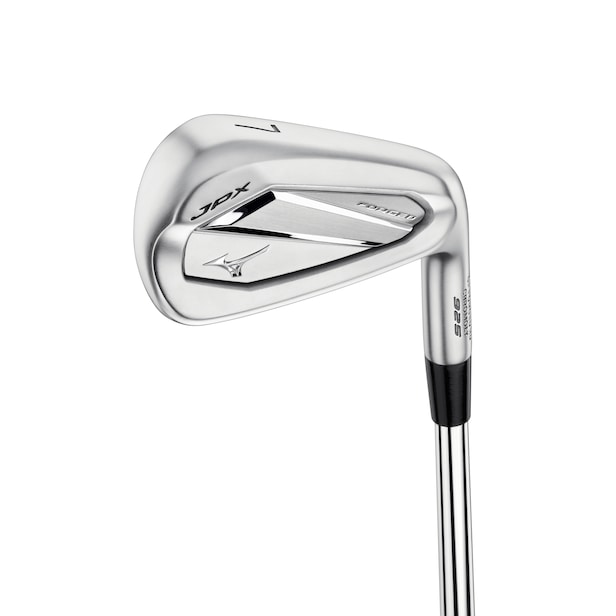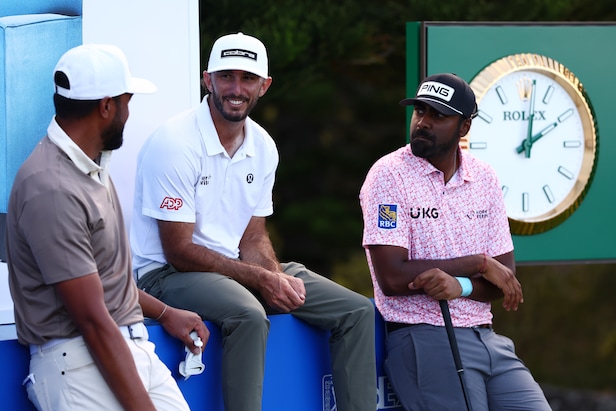How Callaway’s oversized driver revolutionized golf – Australian Golf Digest

- by Admin
- September 3, 2024
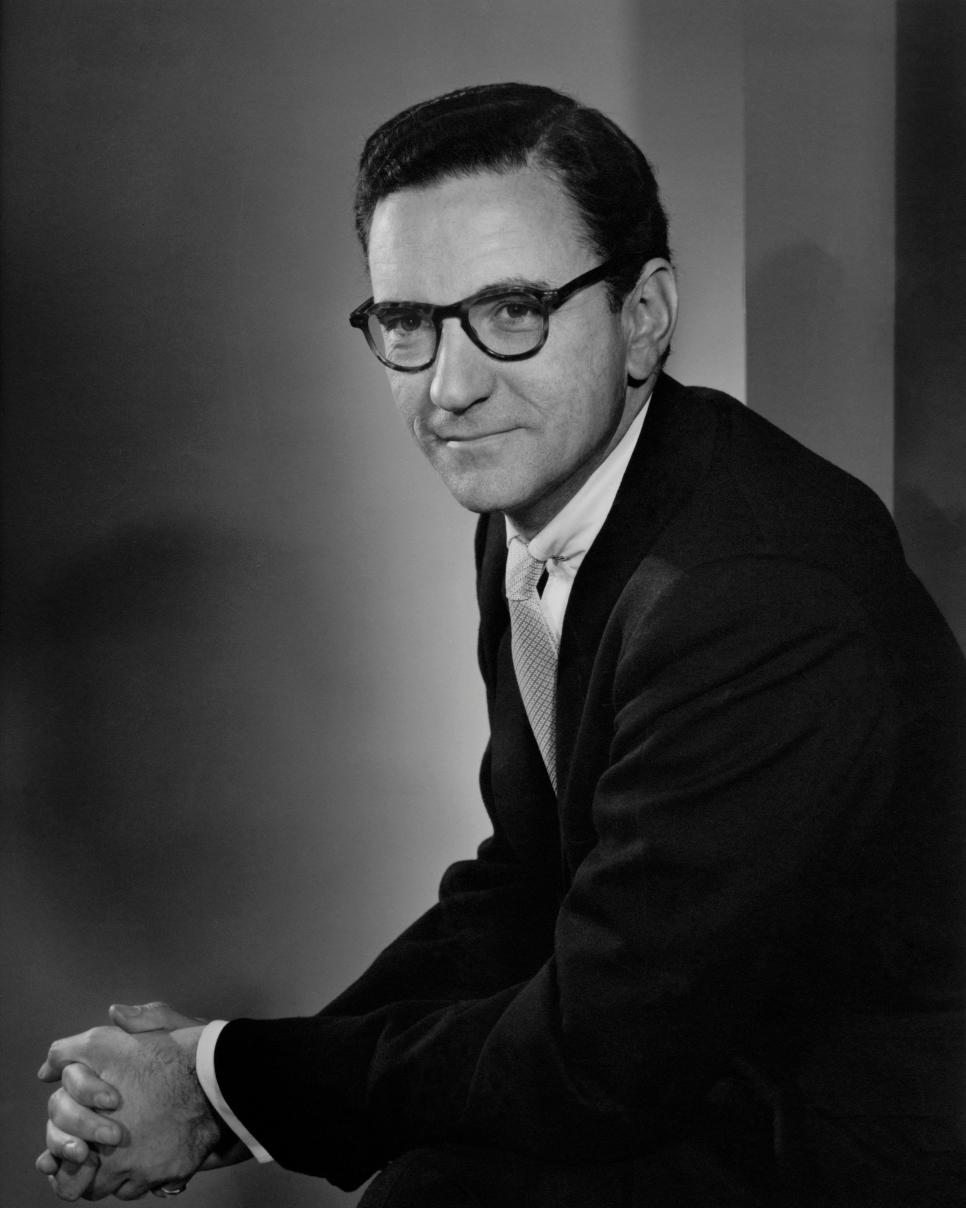
Editor’s note: The following is excerpted from the new memoir The Unconquerable Game: My Life in Golf and Business by Ely Callaway. Ely Reeves Callaway founded the golf-club company in 1982 after successful careers in textile and winemaking. He died in 2001 at age 82.
When Callaway set out to reimagine the driver in the late 1980s, we knew we needed to create something radically new that would significantly improve average golfers’ chances of hitting a good shot with their generally not-too-good swing. We needed a club with a larger sweet spot that remained stable at impact (particularly for off-center hits), allowing the player to make more mistakes—a club that was forgiving. The problem was fundamentally one of physics: We needed to make our existing driver-clubhead design 25-percent bigger but not heavier (otherwise it would be too cumbersome to swing and more likely to break). We were willing to gamble that if we did that, we’d have a more satisfying club that would sell at a profit.
We did not originate the oversized clubhead. Hisamitsu Ohnishi, the executive director of our Japanese distributor, Sumitomo, and one of the great figures in golf in Japan, had introduced us to an oversized driver called the Yonex. This club was big in Japan, and Ohnishi thought it might do well to add this type of design to Callaway’s repertoire. We liked the idea, but after three weeks of trials, we determined the Yonex was not as good as our S2H2 driver. It didn’t feel as good, and it didn’t perform as well. Still, the idea of an oversized clubhead was promising. This was a critical moment: We could take the safe route and simply make an American knockoff of the Yonex and sell it right away or spend a lot of time and money finding ways to improve it. Some say it’s best to be first, but that’s a myth. Being first is always short-lived. The key is to be first and the best. We chose to take our time and make the best. Fortunately for us, nobody else was interested in oversized clubheads, so we were going to be first no matter what.
Our first problem was that Yonex had a graphite head. Graphite was a composite material of carbon fiber and epoxy that could be stretched easily but was prone to scuffing and caving in. We thought, Let’s try to make it out of stainless steel instead, which is a stronger metal that could better hold its shape. A steel head would require developing a whole new casting technology—a technique to stretch the walls thin enough to make it big but sturdy enough to hold up on impact. I called up Jack Welch, CEO of General Electric, and told him about this hot new idea we had and asked if anybody in his R&D department could lend us a hand. Welch said, “Let me put you in touch with my aircraft department.”
Ely Callaway photographed by Yousuf Karsh in 1959.
My design team, led by Dick Helmstetter and our toolmaker, Glenn Schmidt, with help from GE’s science and technology people, crafted a new mold that could produce 100,000 stainless-steel clubheads without serious deterioration. Usually, the more you made, the more the quality of the heads would deteriorate over time, particularly with the size we were attempting. This mold cost twice as much as a regular mold, but in the long run would be cheaper and make a better clubhead.
I didn’t want to see any of this new technology or new designs until they were done, not even a drawing. I’m not a technical person, and I can’t visualize anything, so I didn’t want to see anything halfway through. All I wanted to see was the finished product so I could take it out and use it. Dick plopped down the first oversized stainless-steel clubhead on my desk in the summer of 1990. It wasn’t that big, but it was bigger than normal at the time. It was also ugly, but it pleased me in a way I couldn’t quite put into words. I told Dick to stick the head on a shaft so that we could take it for a spin.
MORE: To hit the ball farther, you need more ball speed, right? Not always
Dick and I tested our new driver that weekend at The Vintage Club in Indian Wells, Calif. The first time I swung it was on the 10th hole of the Mountain Course. I hit my first shot off the tee down the middle of the fairway. That was good, but it wasn’t the clincher: On my second shot, I hit the driver off the fairway, and the ball fired directly to the pin. As good a player as I was, I could not hit this kind of shot from the fairway. The trajectory as it rose into the air was more like a tee shot than an approach shot—it felt like it had been propelled out of a cannon rather than ricocheting off the club face.
Because of this feeling, the name of our new driver came to me almost immediately. It was not uncommon for people to name golf clubs after weapons—Spalding came out with a series of clubs called The Cannon in the mid-1980s. I remembered a reference book on artillery from my days in the army during World War II. There was one image of a giant World War I German howitzer invented by Friedrich Krupp AG, the largest weapons manufacturer in Germany. The reference book claimed this cannon shot artillery shells farther and straighter than any other. German soldiers had bestowed the cannon with a peculiar nickname.

The original Big Bertha driver debuted in 1991 at 190 cubic centimeters.
I often went golfing with my son, Nicholas, and I brought the new Callaway driver to the Del Mar Country Club one weekend, hoping I might impress him. I told him, “Nicky, we’re gonna bring out a new golf club next year, and this is the first prototype. It is going to change the game of golf. I’ve even given it a name. Would you like to know what it is?”
He said, “Sure, lay it on me.” “I’m gonna call it Big Bertha.” Nicholas shot back, “Dad, that’s the worst name for a product I’ve ever heard.”
I replied, “Well, you’re wrong, for two reasons. First, it’s a great name because it has a story behind it: the World War I German cannon! Second, just remember: The product makes the name, the name doesn’t make the product.”
Nicholas retorted, “I still think it’s a terrible name.” To make the clubhead bigger but not heavier, we stretched the stainless-steel perimeter walls like blowing up a balloon. This had the unintended consequence of making our driver sound like an empty Campbell’s Soup can every time you struck the ball.
The sound seemed like a disadvantage. Every player knows that that sound on impact is key. Or maybe they know it but don’t know they know it.
MORE: Here’s every driver used by a winner on the PGA Tour in the 2024 season
We worked hard to preserve that classic persimmon sound. First, we filled the heads with foam so they wouldn’t sound so hollow, but the foam made the club heavier, causing our shafts to continually break. We then tried lighter foam, but that deteriorated within the clubhead after only a month. We had many problems, but they were the kind of problems you run into when you’re trying to do something nobody has ever done before. The only question was whether the problems were going to kill the promise.
Eventually, I decided to get rid of the foam in part because of the weight problem but also because we decided we liked the sound of the early Big Berthas better. We were selling a whole new type of club; why should it sound like an old one?
We got the final factory samples of Big Bertha around Christmas 1990, with clubheads a whopping 190 cubic centimeters. It wasn’t just that it was bigger. By putting more weight around the clubhead’s perimeter, we enlarged the sweet spot compared to persimmon drivers. Our designers used our patented S2H2 technology to eliminate the neck of the club by extending the shaft through the clubhead, creating more energy at impact. We tested them at Bear Creek in Temecula, Calif., next to where I lived, and at The Vintage Club. The Big Bertha performed so beautifully, we just hit balls indiscriminately into the desert for sheer pleasure.
When you’re releasing a new product, you have to predict how many you’re going to sell for the first six months of the next year so that you can decide how many to fabricate and what the lead time must be and how much money you will risk on inventory. Starting from scratch, it took 26 weeks to get a clubhead after placing an order with the foundry. You don’t go down to the corner store and ask for 10,000 Big Bertha clubheads and get them within two weeks. Someone suggested we order 40,000, but I said, “No, we’re going to order 60,000,” which at the time was a huge commitment. No customer had tried the club or even seen it, but still we ordered 60,000 clubs.
We bet the farm on Big Bertha. Each club cost about $25 to $30 to produce, instead of the usual $12. We spent $2 million producing these funny-looking, oversized sticks. We had a feeling our casting technique would hold up to 500 clubheads before the mold deteriorated, but 60,000? We really had no idea. Meanwhile, the head of the casting plant was a heavy drinker and ran us all nuts. We couldn’t kill him, we couldn’t fire him, and we couldn’t ignore him: We just had to work around him. Hasn’t everybody encountered that kind of person in their workplace?
I told them the name was Big Bertha, and that’s the way it was. Few people rebelled against Jack Welch, but I didn’t give a damn what Jack Welch thought.
After we placed the order but before we debuted Big Bertha, the General Electric Pension Fund heard about this promising new club and wanted to have a meeting. Dale Frey told us how excited they were about our new product. “Now, we know you name everything,” he said, “and I hear that you’re going to name it Big Bertha, and we’re wondering whether or not that’s the best name.” I said, “Well, we think it is. Have you got a better one?” He said, “No, no, it’s just that some of us think it might not be the best.”
“Some of us who?”
“Well, me, and John Myers and Jack Welch.”
Well, that’s a powerful group right there, but they didn’t have a substitute, so I told them the name was Big Bertha and that’s the way it was. Very few people rebelled against Jack Welch, but I didn’t give a damn what Jack Welch thought, and I told Dale Frey just that. Now, you can’t do that unless you have a record of achievement or unless you’re very foolish, but my record of achievement was such that I could reasonably take a position, and say, well, I’m going to do things my way.

Ely Callaway, CEO of Callaway Golf
Kim Kulish
Within one week of the trade show, before a single consumer had spent a cent on a club, pros on the PGA, Senior and LPGA tours were teeing off with Big Bertha.
Despite my bold prediction to Nicholas, I didn’t know exactly how good Big Bertha was, or if it would even be successful. No matter how much confidence you have, there’s no real way of knowing until a product is used by the customer. We didn’t really do any market research, either, at least not in the traditional sense. Why would we? If I had gone to consumers in 1991 and asked them whether they would buy a driver that was 25-percent bigger than the one they already had, looked different from anything they’d ever hit, was priced twice as high as any driver they’d ever paid for, made a peculiar sound on impact, and had a funny-sounding name, they would say no, so we didn’t ask them! We wanted to do it, and we knew that if we did it right, the customers would buy it and be delighted.
We debuted the Big Bertha at the PGA trade show in Orlando in January 1991. We didn’t do much advertising because we couldn’t afford it. Instead, we designed our campaigns to create a maximum splash. During the week of the trade show, we took out a full-page ad in the local North Florida edition of The Wall Street Journal. Our sales staff hand-delivered the paper to every hotel room in town on the second day of the show. Because nobody notices whether it’s a local edition, these people thought they were seeing an expensive national ad. With brain power, a few sore backs and a little money, we got a lot of high-priced exposure on the cheap.
Callaway held a press conference to discuss our revolutionary new club, and I made sure to put Jack Welch beside me at the table. I asked him to stand up and accept some recognition for helping develop Big Bertha. He hadn’t really done much, but he was our money, and it’s never a bad idea to let your money feel good about itself. Three years before, our S2H2 irons had established us as a company to be reckoned with, but that was nothing compared to the enthusiasm with which the industry greeted Big Bertha.
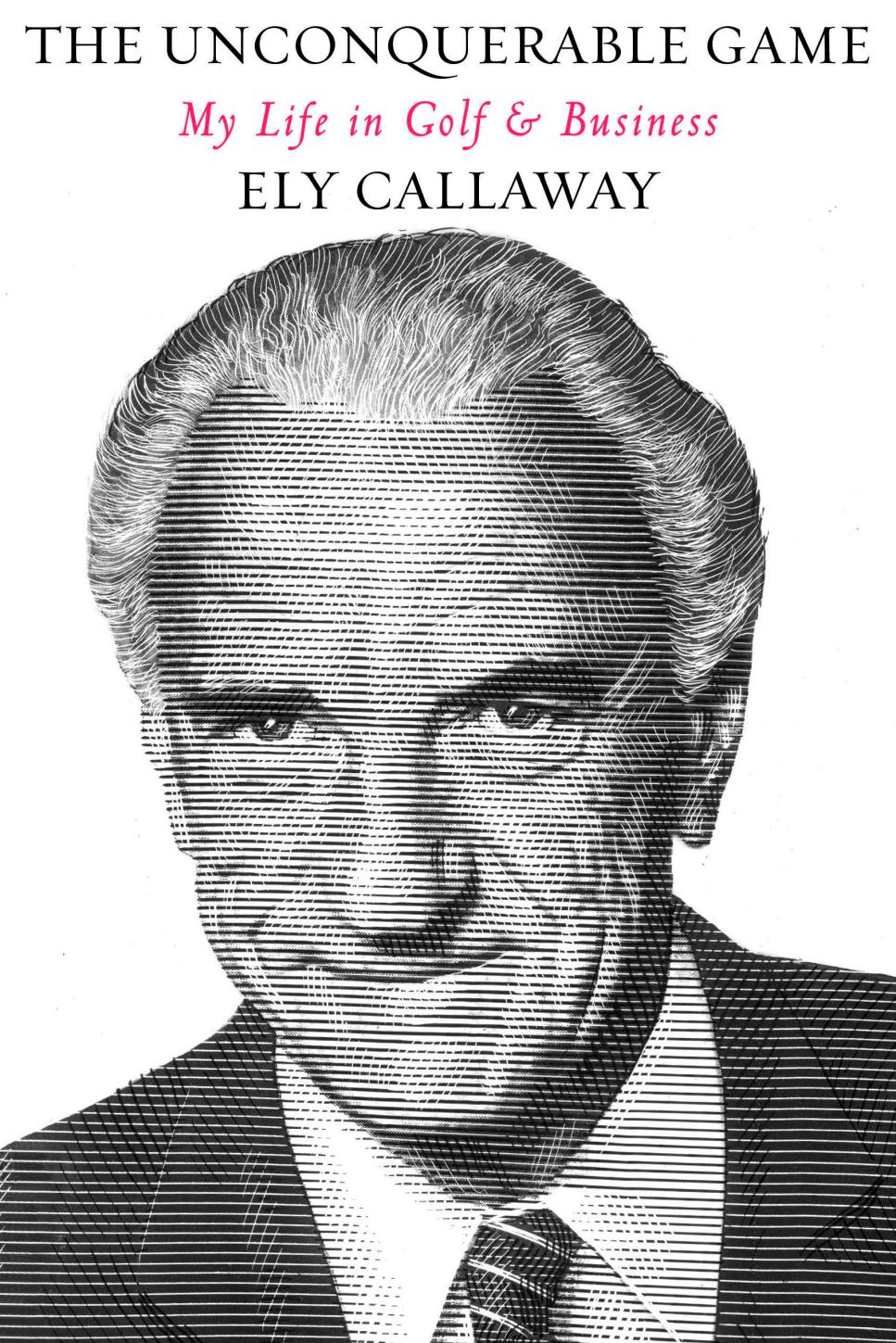
Printed by permission from the upcoming book The Unconquerable Game: My Life in Golf and Business by Ely Callaway. Scheduled to be published in print, e-book and audiobook on March 24, 2025, by Callaway Arts & Entertainment ($40). Copyright © 2025 by Nicholas Callaway.
Big Bertha was one of those products, of which there are very few, that lit a fuse and took off like a rocket. We had fretted over our initial order of 60,000. We should have ordered 150,000. Within weeks of the trade show, before a single consumer had spent a cent on a club, professionals on the PGA, Senior and LPGA tours were teeing off with Big Bertha. President George Bush, Bill Clinton, Sean Connery, Jack Lemmon and most of the CEOs and corporate executives at the AT&T Pro-Am had a Bertha in their bag. Within a year it became the best-selling golf club in the world, favored by tour pros and hackers alike. Our sales that year leaped to $54 million. During that first year, we ran three print ads and not one second of television ads. It was all word of mouth.
Once we sold through our initial stock, it took us the better part of three and a half years to catch up with demand. The Big Bertha catapulted us from a small golf-club company into a behemoth. It also kicked off the age of stainless-steel drivers and oversized clubheads, an arms race of bigger heads and lighter metals that would continue into the 21st century.
What Callaway accomplished with Big Bertha can be done in any business. Think of how the Internet and email changed personal computing, or how Amazon popularized online shopping. Suddenly an aspect of the game that perhaps felt too advanced for the common man became widely accessible, even beloved. It isn’t that hard to do. The problem is that most people don’t make up their minds to do it.
The book is now available for pre-order on Amazon, Barnes and Noble and booksellers everywhere.
More From Golf Digest+ 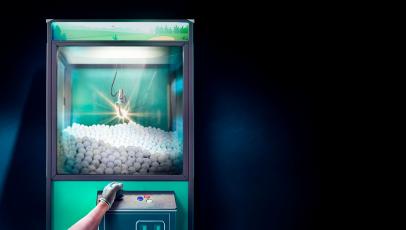 Golf Digest Logo The best new golf balls of 2024
Golf Digest Logo The best new golf balls of 2024  Golf Digest Logo The unlikely story of a man who quit his job to make leather headcovers and succeeded
Golf Digest Logo The unlikely story of a man who quit his job to make leather headcovers and succeeded  Aim Smart What a season-long driver experiment revealed about golfers’ aiming mistakes
Aim Smart What a season-long driver experiment revealed about golfers’ aiming mistakes
This article was originally published on golfdigest.com
The Latest News
-
January 6, 2025Max Homa perfectly summed up what it was like getting dusted by record-low scoring at Kapalua – Australian Golf Digest
-
January 6, 2025Mizuno JPX925 Forged and Forged Black irons: what you need to know – Australian Golf Digest
-
January 6, 2025Cruz Hewitt takes expectation and Nick Kyrgios jokes in his stride ahead of Australian Open debut
-
January 6, 20255 things you should watch for during the TGL’s debut event – Australian Golf Digest
-
January 6, 2025Australian Open qualifying guide: Feature matches including Hewitt, Tomic – Day 2 | Sporting News Australia
